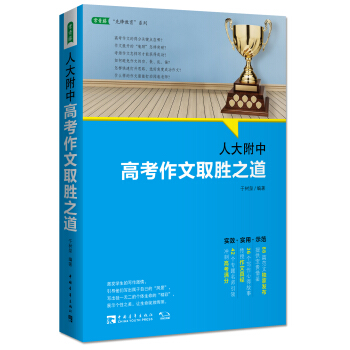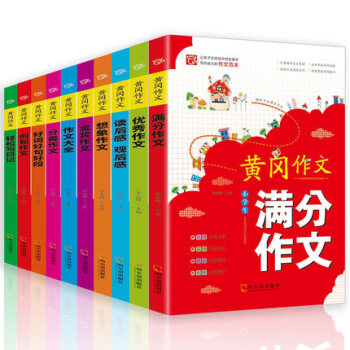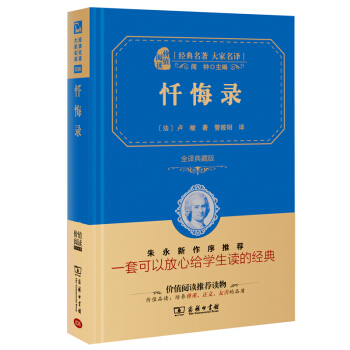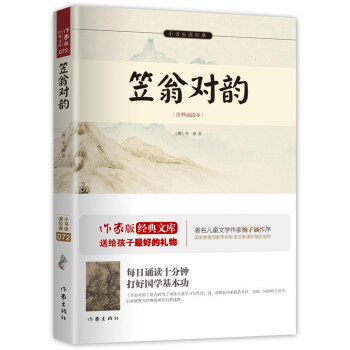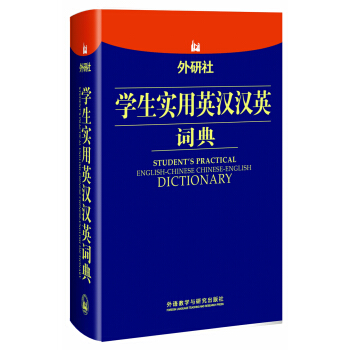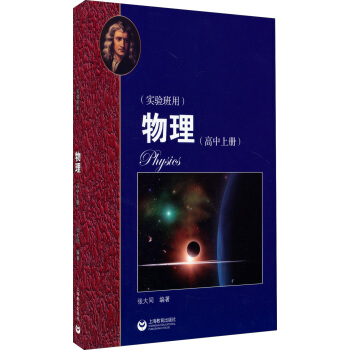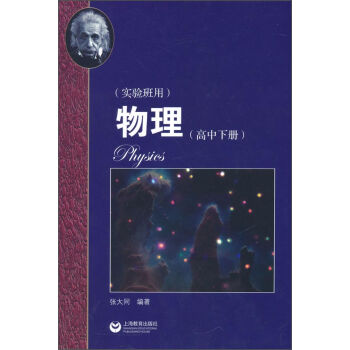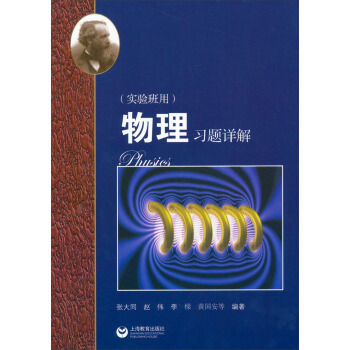具体描述
编辑推荐
zui实用的物理竞赛辅导书,没有之一;
比起中学教师写的辅导书,概念更准确,思路更清晰;
比起大学教师写的辅导书,更针对中学生的知识基础,更容易理解和掌握;
与第1版相比,新增了50%以上的内容,插图更清晰准确。
内容简介
《奥林匹克竞赛实战丛书·中学奥林匹克竞赛物理教程:电磁学篇(第2版)》是作者在长期进行奥林匹克中学物理竞赛指导和教学实践的基础上编写的,倾注了作者对奥林匹克物理竞赛事业数十年的心血和热情。《奥林匹克竞赛实战丛书·中学奥林匹克竞赛物理教程:电磁学篇(第2版)》紧紧围绕中学物理的各个方面以及中学物理竞赛内容:静电场、稳恒电流、静磁场、电磁感应、交流电、电磁振荡与电磁波,在中学层面上精辟生动地介绍了有关重点概念、定律和公式,结合丰富的练习题,以生动的实例进行问题的分析和综合,训练积极主动的解题思路,活跃思想,发展智能。同时,各章均给出了具有一定分量的习题,并附有相应的参考答案,在科学训练的基础上,促使中学生整体物理素质的提高。
《奥林匹克竞赛实战丛书·中学奥林匹克竞赛物理教程:电磁学篇(第2版)》可作为广大中学生中学物理综合学习和素质提高的有效辅导书和工具书,是广大中学生参加各类中学物理竞赛、奥林匹克物理竞赛以及高考物理复习迎考的必备书籍;同时,《奥林匹克竞赛实战丛书·中学奥林匹克竞赛物理教程:电磁学篇(第2版)》也为中学物理教师提供了一个物理教学探索研究的崭新思路,是广大中学物理教师不可多得的教学参考书。
作者简介
程稼夫,中国物理学会委员会会员,原中国科学技术大学少年班班主任,中国科学技术大学教授,物理奥林匹克竞赛教练,国际中学生物物理奥林匹克中国队员教练,著有《中学奥林匹克竞赛物理讲座》、《中学奥林匹克竞赛物理课程·力学篇》、《中学奥林匹克竞赛物理教程·电磁学篇》等经典学习辅导书,是目前为止zui具quanwei和实用性的参考书。
内页插图
目录
第2版序
序
第1章 静电场
1.1 电荷守恒定律
1.2 库仑定律
1.2.1 库仑定律包含的内容
1.2.2 电荷和质量
1.2.3 库仑定律成立条件以及适用范围
1.3 电场强度
1.3.1 电场强度的定义
1.3.2 电场强度叠加原理
1.3.3 若干带电系统产生的电场强度
1.3.4 静电场基本定理之一——高斯定理
1.4 电势能电势
1.4.1 静电势能差静电势能
1.4.2 电势差电势
1.4.3 电势叠加原理
1.4.4 电场线与等势面
1.4.5 若干带电系统产生的静电场的电势
1.4.6 静电场基本定理之二——环路定理
1.5 静电场中的导体和电介质
1.5.1 静电平衡
1.5.2 电像法
1.5.3 再论静电屏蔽
1.5.4 静电场的唯一性定理
1.5.5 电容和电容器
1.5.6 静电场中的电介质
1.6 静电能
1.6.1 点电荷系统电势能的表达式
1.6.2 带电平行板真空电容器的静电能
1.6.3 电场能
1.6.4 利用静电能求静电力
1.7 例题
习题1
第2章 稳恒电流
2.1 稳恒条件
2.1.1 电流强度和电流密度
2.1.2 稳恒条件
2.2 欧姆定律和焦耳定律
2.2.1 欧姆定律电阻和电阻率
2.2.2 焦耳定律
2.2.3 金属导电的微观解释
2.3 电源及电动势
2.3.1 非静电力
2.3.2 电动势
2.4 电源路端电压闭合回路欧姆定律
2.4.1 电源路端电压
2.4.2 闭合回路欧姆定律
2.4.3 数电压法
2.5 简单电路
2.5.1 串联电路
2.5.2 并联电路
2.5.3 伏特表和安培表
2.5.4 欧姆表
2.5.5 一平衡电桥
2.5.6 电位差计
2.6 复杂电路
2.6.1 基尔霍夫方程组
2.6.2 等效电源定理
2.6.3 叠加定理
2.6.4 Y-△电路的等效代换
2.7 无源电阻和电容网络有源电阻和电容网络
2.7.1 无源电阻网络
2.7.2 无源电容网络
2.7.3 有源电阻和电容网络
2.8 物质的导电性
2.8.1 金属的导电性
2.8.2 液体的导电性
2.8.3 气体的导电性
2.8.4 真空中的电流
2.8.5 半导体导电
2.8.6 超导现象简介
2.9 例题
……
第3章 静磁场
第4章 电磁感应
第5章 交流电
第6章 电磁振荡与电磁波
前言/序言
《中学奥林匹克竞赛物理教程:电磁学篇(第2版)》图书简介 本书是一部专为中国中学奥林匹克竞赛物理爱好者量身打造的深入学习教程,旨在系统地梳理和精讲电磁学领域的核心知识体系,为广大师生在竞赛备战中提供坚实理论基础与高效解题策略。本书是“奥林匹克竞赛实战丛书”系列中的重要一册,秉承该系列严谨、实用的编撰理念,精炼奥赛历年真题,并结合新颖的教学方法,力求在有限的篇幅内,最大限度地提升读者的物理思维能力与竞赛竞争力。 内容概览与特色: 本书的编排紧密围绕中学奥林匹克竞赛物理的教学大纲和考查重点,涵盖了电磁学领域最核心、最常考的几个部分,每一章节都力求深入浅出,既有宏观的理论框架,又不乏微观的细节解析。 静电学: 本章将从电荷的性质、库仑定律入手,详细阐述电场强度、电势、电势能等基本概念。在理论讲解的基础上,本书着重强调了高斯定律在计算电场强度时的应用,特别是针对各种对称性问题的处理技巧。此外,对导体在电场中的静电平衡、电介质的极化等进阶内容也进行了深入剖析,并辅以大量精心设计的例题,帮助读者熟练掌握如何分析和解决复杂的静电场问题。电势的计算,尤其是积分法在复杂电荷分布下的应用,是本章的难点和重点,本书将通过多角度的解析,引导读者建立清晰的计算思路。 电容与电介质: 在深入理解了电场和电势之后,本书将进一步探讨电容器的工作原理。从平行板电容器的电容公式推导,到串并联电容器的等效计算,本书都进行了详尽的介绍。特别地,对于电容器在电路中的动态过程,如充放电,本书将结合微分方程的方法,帮助读者理解电荷、电流随时间变化的规律。电介质对电容的影响,如介电常数、介电强度等概念,以及它们如何改变电场和电势,也是本章的重点。本书还讨论了孤立带电体的电容以及一些特殊形状的电容器,拓宽了读者的知识视野。 恒定电流与电路: 本章是电磁学部分的基础,也是应用最广泛的部分。从电流的定义、欧姆定律在串联和并联电路中的应用,到基尔霍夫定律在复杂电路分析中的强大威力,本书都进行了系统而详细的讲解。电阻率、温 Get A Handle On The Fundamentals Of Electromagnetism And Master Problem-Solving Techniques For Physics Olympiads. This Comprehensive Textbook, "Olympiad Competition Practice Series · Junior High School Olympiad Physics Tutorial: Electromagnetism (2nd Edition)," is Designed to Equip Aspiring Young Physicists with the Essential Knowledge and Advanced Strategies Needed to Excel in Physics Olympiads. Key Features and Content: The book is meticulously structured to align with the rigorous demands of Olympiad-level physics education, focusing on the core principles of electromagnetism. Each chapter offers a deep dive into fundamental concepts, progressively building towards complex problem-solving. Electrostatics: Beginning with the fundamental nature of electric charge and Coulomb's Law, this section meticulously explains electric field strength, electric potential, and potential energy. Beyond theoretical exposition, the book places significant emphasis on the application of Gauss's Law for calculating electric field strength, particularly in scenarios involving various symmetries. Furthermore, it provides in-depth analysis of crucial concepts such as electrostatic equilibrium in conductors and the polarization of dielectric materials. Numerous carefully crafted examples are included to help students develop proficiency in analyzing and resolving intricate electrostatic problems. The calculation of electric potential, especially the application of integral methods for complex charge distributions, is identified as a critical yet challenging area. This chapter guides readers through multifaceted analyses, fostering a clear computational approach. Capacitance and Dielectrics: Following a thorough understanding of electric fields and potentials, the book delves into the operational principles of capacitors. It offers a detailed exposition of the derivation of the capacitance formula for parallel-plate capacitors and the equivalent capacitance calculations for series and parallel combinations. Of particular note, the book provides a comprehensive explanation of the dynamic processes within circuits, such as charging and discharging of capacitors. It utilizes differential equations to help students grasp the laws governing the time-dependent variations of charge and current. The influence of dielectric materials on capacitance, including concepts like dielectric constant and dielectric strength, and how they modify electric fields and potentials, constitutes another key focus of this chapter. The book also examines the capacitance of isolated charged bodies and certain uniquely shaped capacitors, thereby broadening the reader's academic horizons. Steady Current and Circuits: This chapter forms the bedrock of the electromagnetism section and is characterized by its extensive practical applications. From the definition of electric current and the application of Ohm's Law in series and parallel circuits to the powerful utility of Kirchhoff's Laws in analyzing complex circuit configurations, the book provides systematic and detailed explanations. The introduction of resistivity and its temperature dependence, along with the concepts of electromotive force (EMF) and internal resistance, lays the groundwork for understanding various circuit components and their behaviors. The analysis of power consumption and energy dissipation in circuits, including the calculation of efficiency and the implications of Joule heating, is thoroughly covered. The book further explores more advanced circuit analysis techniques, such as nodal analysis and mesh analysis, equipping students with robust tools for dissecting intricate circuit networks. The examination of transient phenomena in RC and RL circuits, where the application of differential equations is essential for understanding the time-varying nature of current and voltage, is also a significant component of this chapter. The book emphasizes a systematic approach to circuit problem-solving, encouraging students to identify circuit types, apply relevant laws, and meticulously check their results. Magnetism and Magnetic Fields: This section introduces the fundamental principles of magnetism. It begins with a discussion of magnetic poles, magnetic field lines, and the concept of magnetic flux. The Ampere's Law, a cornerstone of magnetostatics, is presented in detail, along with its applications in calculating the magnetic fields generated by various current distributions, such as infinite straight wires, solenoids, and toroids. The book thoroughly explores the magnetic force exerted on moving charges (Lorentz force) and current-carrying conductors in magnetic fields, providing numerous examples to illustrate these principles. The behavior of magnetic materials, including paramagnetism, diamagnetism, and ferromagnetism, is discussed, along with their impact on magnetic fields. A significant portion of this chapter is dedicated to the analysis of electromagnetic induction, including Faraday's Law and Lenz's Law. The book explains how changing magnetic fluxes induce EMF and current, and how this phenomenon is applied in practical devices. The concept of magnetic energy stored in inductors and the dynamics of RL circuits are also covered, offering a comprehensive overview of magnetic phenomena. Electromagnetic Induction and AC Circuits: Building upon the principles of magnetism, this chapter delves into the crucial concept of electromagnetic induction. Faraday's Law and Lenz's Law are rigorously explained, with numerous examples illustrating their application in various scenarios, from simple induction coils to more complex generators. The book also explores the concept of inductance, including self-inductance and mutual inductance, and their role in RL circuits and energy storage. The transition to alternating current (AC) circuits is a significant focus. The fundamental differences between AC and DC circuits are highlighted, and the behavior of resistors, capacitors, and inductors in AC circuits is analyzed in detail, introducing concepts such as impedance, reactance, and phase. The book covers resonance phenomena in RLC circuits, a topic of paramount importance in many physics and engineering applications. The calculation of RMS values for voltage and current, and the concept of power in AC circuits, are also thoroughly explained. Electromagnetic Waves: The final chapter provides an introduction to electromagnetic waves, unifying electricity and magnetism. Based on Maxwell's equations (presented conceptually without requiring advanced calculus for introductory purposes), the book explains the nature of electromagnetic waves as propagating disturbances in electric and magnetic fields. The spectrum of electromagnetic waves, from radio waves to gamma rays, is discussed, along with their properties and applications. The concept of the speed of light as a fundamental constant arising from electromagnetic theory is emphasized. While not delving into the rigorous mathematical derivation of Maxwell's equations, this chapter aims to provide a conceptual understanding of how oscillating charges generate electromagnetic waves and how these waves carry energy and momentum. Pedagogical Approach: Conceptual Clarity: Each topic is introduced with clear definitions and intuitive explanations, building a strong conceptual foundation. The book avoids jargon where possible and clarifies complex terms when introduced. Rigorous Mathematical Treatment: While emphasizing conceptual understanding, the book also provides the necessary mathematical framework for solving Olympiad-level problems. Derivations are presented step-by-step, making them accessible to students. Abundant Solved Examples: A wide range of solved examples are integrated throughout the text, covering various difficulty levels and problem types. These examples serve not only to illustrate theoretical concepts but also to demonstrate effective problem-solving strategies. Olympiad-Specific Problem-Solving Techniques: The book focuses on techniques and approaches that are particularly useful for Olympiad competitions. This includes strategies for simplifying complex problems, identifying symmetries, and using conservation laws effectively. Chapter-End Exercises: Each chapter concludes with a set of carefully selected exercises, ranging from straightforward drills to challenging problems that require deeper insight and synthesis of knowledge. Answers and hints are provided for most exercises to facilitate self-study. Concise and Targeted Content: The content is carefully curated to focus on topics frequently appearing in Olympiad physics examinations, ensuring that students' study efforts are directed towards the most relevant material. Clear and Engaging Language: The prose is clear, direct, and engaging, making the learning process enjoyable and effective. The book avoids overly academic or dry language. Target Audience: This book is an indispensable resource for: Junior High School Students: Preparing for physics Olympiad competitions at the national and international levels. Physics Enthusiasts: Seeking a deeper and more rigorous understanding of electromagnetism beyond the standard curriculum. Physics Teachers and Tutors: Looking for supplementary materials and advanced teaching aids to guide their students in Olympiad preparation. By mastering the content presented in "Olympiad Competition Practice Series · Junior High School Olympiad Physics Tutorial: Electromagnetism (2nd Edition)," students will not only be well-equipped to tackle the challenges of physics Olympiads but will also develop a profound and lasting appreciation for the elegance and power of electromagnetism. This book is a testament to the belief that with dedication, clear guidance, and rigorous practice, students can achieve remarkable success in the exciting field of physics.






